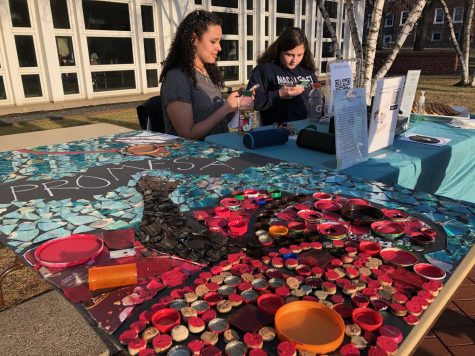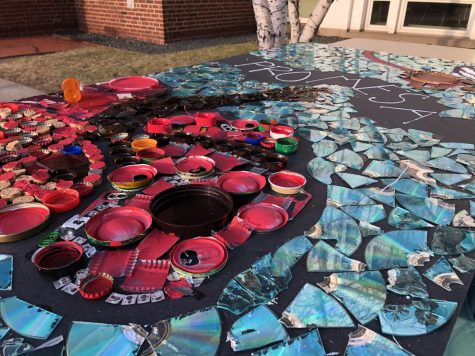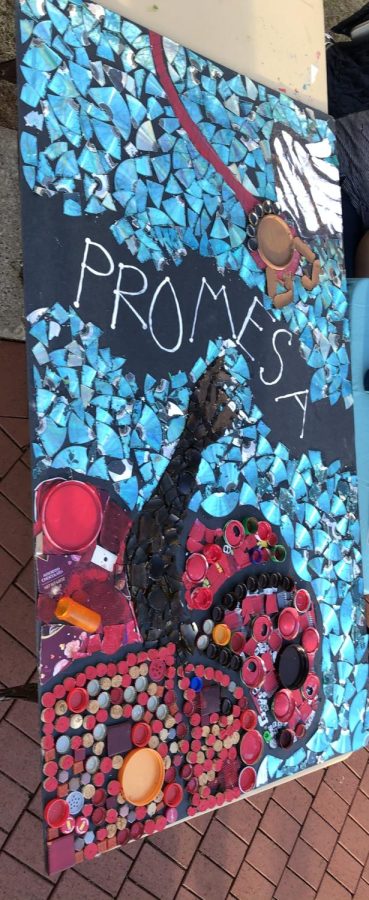The Return of “Make Art, Not Waste”
April 28, 2022
Shattered glass, bottle tops, broken CDs and floss sticks. I found these not in a trash can, but as part of a visually striking art piece by Jeanarry Rosa Rodríguez Hernández ‘23. Her work was on display as part of the second annual “Make Art, Not Waste” event, where people turn trash into art in celebration of Earth Week. Designed as an opportunity for students on campus to weave together their interests in sustainability and art, “Make Art, Not Waste” also serves as a space to prompt conversations about throwaway culture and how we can reimagine our relationship with waste.
According to the latest national overview from the United States Environmental Protection Agency (EPA), total generation of municipal solid waste (MSW) in 2018 was 292.4 million tons. That is equivalent to each person generating 4.9 pounds of waste each day, and the pandemic has undoubtedly driven up these rates.

“Seeing the amount of trash that had to be created to make things more sanitary and the extensive amount of packaging being used was really overwhelming,” Hernández said. “It made me think about how we need to restructure the system because more pandemics and more disturbances are going to occur and if the infrastructure we have in place is to create more waste, then we have to do something different.”
Waste management was just one issue central to the student art pieces. In her design, Hernández also incorporated issues of environmental justice regarding the colonial dynamics between the United States and her home in Borikén (the indigenous Eyéri name for Puerto Rico).
“[The relationship] keeps us from being in charge of the kind of energy we want to have,” she said. “For example, a lot of people want to switch to renewable energy, but because we’re in such great debt to the United States we can’t.”
With a centralized oil-dependent energy system, there are severe consequences when natural disasters such as hurricanes hit the island. According to Hernández, blackouts make it difficult for children to study and create health risks for residents dependent on ventilators to breathe. This causes many residents of Borikén to leave the island, a situation Hernández represents in her art piece with a baby being taken away from its mother.
Colonial legacies in Borikén and the resulting environmental injustices can be difficult subjects in which to engage people. But Director of Sustainability Dr. Christie Manning sees that as the value of “Make Art, Not Waste.”
“Art gives us a different entry point for thinking about the many sustainability and environmental justice challenges we are facing,” Manning said. “Curiosity disarms the filters we normally put up when we suspect we’re going to be told or confronted with something that might make us uncomfortable.”

For students interested in helping plan or contributing artwork to next year’s “Make Art, Not Waste” event, Manning encourages reaching out to the Sustainability Office.
“‘Make Art, Not Waste’ was a totally student-driven initiative and I would love to see it happen again,” she said.
The “Make Art, Not Waste” event was supported by a Sustainability Office Small Project Fund. To learn more about the guidelines and how to apply, visit macalester.edu/sustainability/small-project/.
